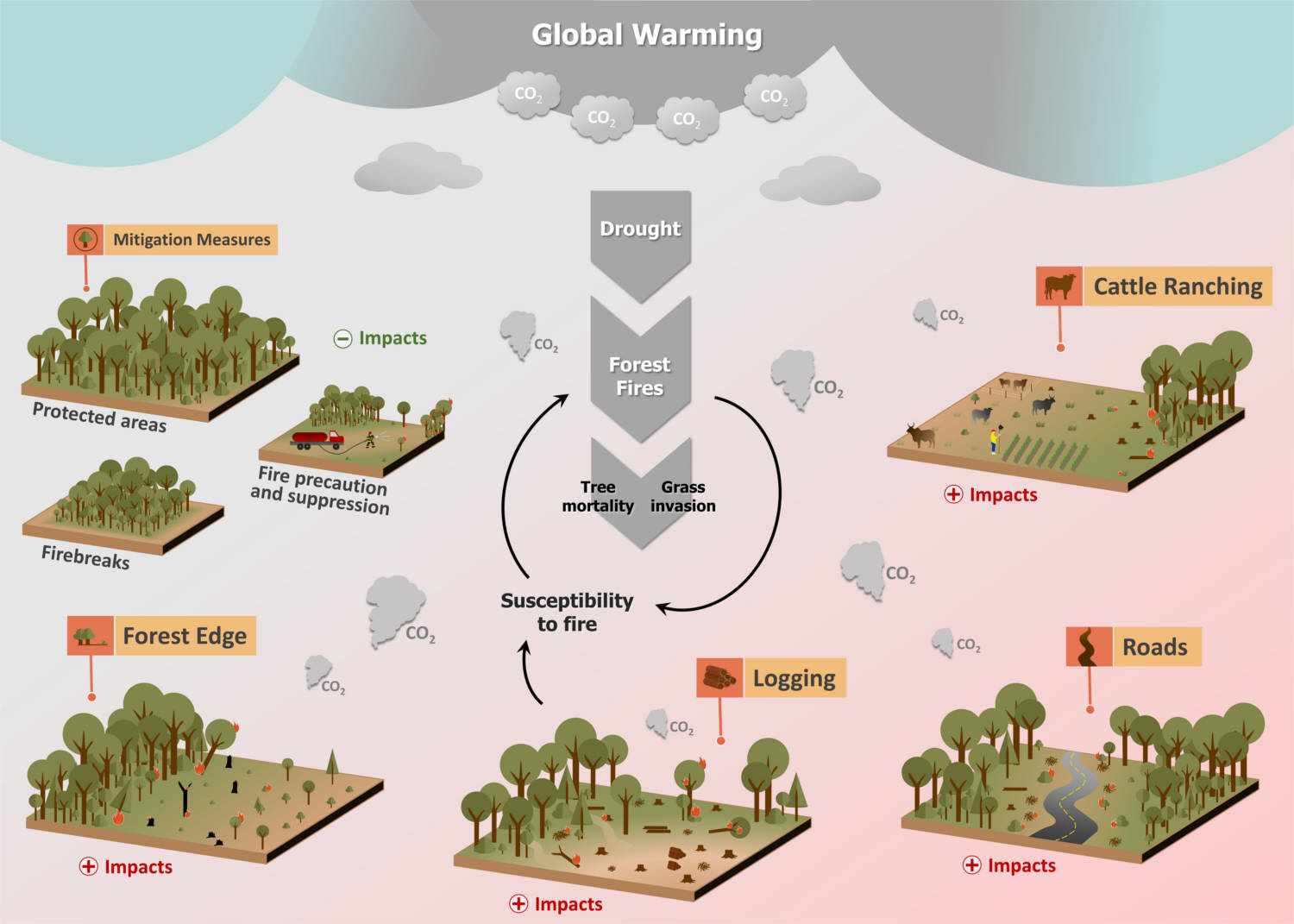As a destructive force, fire can quickly consume large amounts of biomass causing a series of negative impacts, such as greenhouse gas emissions, post-fire soil erosion, biodiversity loss, and air pollution. Humid tropical forests are initially resistant to fire but then begin to degrade if hit by recurrent fires. In the Brazilian Amazon, anthropogenic fires are among the main causes of forest degradation [1-3]. However, in some fire-dependent ecosystems (e.g. Cerrado), fire is an element of the health and perpetuity of the system.
Assessing the economic impacts of fire is challenging because fire affects a wide array of ecosystem services. To simplify this problem, and provide an indicator of the impact of fire, we evaluate the economic losses attributable to fire on sustainable timber harvest in the Brazilian Amazon. In this analysis we integrate a set of simulation models to address the synergy between land-use change, fire spread, and logging across the Brazilian Amazon. In particular, our study assesses the impacts of fires on the economics of sustainable timber production. It is estimated that that fire affects roughly 2% of the production areas that may be harvested between 2012 and 2041, reducing the EAA (Equivalent Annual Annuity) by approximately US$ 39±1 ha/year. These losses, however, could increase to US$ 400±73 ha/year in areas near milling centers hit by recurrent fires in southern and eastern Amazon. Our estimates consider the effects of 40 years of fire, from 2002 to 2041, on the economic losses of timber because the effects of fire, in general, last more than a decade. These economic losses amount to US$ 574±84 million Net Present Value (NPV), representing a reduction of 4% in the total net revenues from sustainable timber in the region over a logging cycle of 30-years. Potential losses could be significantly larger, since only few burnt areas are eventually logged. If all burnt areas would be logged in the near future, the potential losses could amount to US$ 9.3±1.7 billion. Therefore, fire could potentially cause substantial economic losses to forestry in the Brazilian Amazon.
1. Willemen, L. et al. Safeguarding ecosystem services and livelihoods: Understanding the impact of conservation strategies on benefit flows to society. Ecosystem Services, 2013. 4(0): p. 95-103.
2. Fauset, S. et al. Hyperdominance in Amazonian forest carbon cycling. Nature comunications, 2015. 6: 6857. doi: 10.1038/ncomms7857.
3. Hubbell, P.S. et al. How many tree species are there in the Amazon and how many of them will go extinct? PNAS, 2008. 105 (1): p. 11498-11504.

Methodology
[…]
